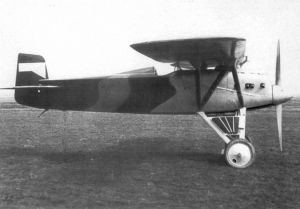Top speed 240 km/h Length 6.84 m Manufacturer Avia | Wingspan 10 m First flight 1923 | |
 | ||
Designers Pavel Beneš, Miroslav Hajn | ||
The Avia BH-7 was a prototype fighter aircraft built in Czechoslovakia in 1923. It was a parasol-wing monoplane developed in tandem with and as an alternative to the BH-6, which shared its fuselage and tail design. Like the BH-6, the BH-7 was involved in a number of serious crashes during its test programme, which led to its abandonment as a fighter. Undaunted, however, Avia used the design as the basis for a racing aircraft, shortening the wingspan by 1.4 m (4 ft 7 in) and fairing it directly into the top of the fuselage and dispensing with the cabane struts. This revised version was designated BH-7B and the fighter (retrospectively) as the BH-7A. When the design proved no more successful as a racer it was finally put to rest.
Specifications
General characteristics
Performance
Armament
